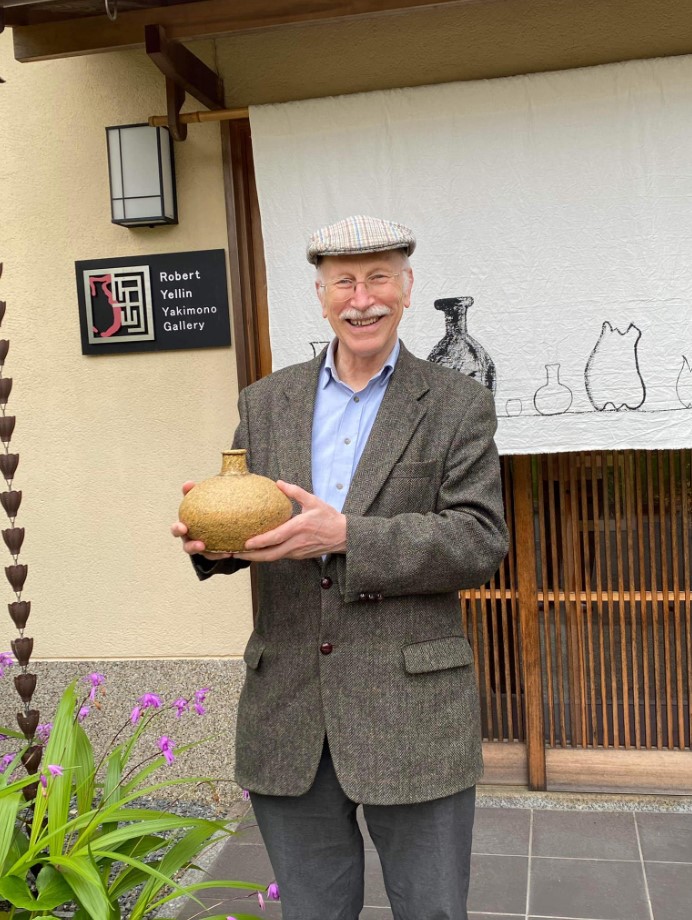This year’s Japan Local Prize was awarded to Writers in Kyoto Member Malcolm Ledger for “Plum Tree by the Eaves”, depicting an ancient tree which embodies the sophistication and elegance of the Heian Period on the grounds of a once-opulent manor. To reside in Kyoto is to be surrounded by history, but unfortunately such significant locales are sometimes ignored and left abandoned. Malcolm illustrates how the plum tree is a timeless bridge between the past and the present, evoking feelings of mono no aware — the gentle melancholy rising from the recognition of the passage of time.
Born in Belfast (United Kingdom) in 1948, Malcolm graduated from Trinity College of Music (London) and London University Institute of Education. He became interested in Zen Buddhism, joining a Zen group under the instruction of Daiyu Myokyo Zenji (formerly Ven. Myokyo Ni) before moving to Japan in 1977 to continue his training. He was accepted as a disciple by Soko Morinaga Roshi at Daishu In (Ryoanji), and also began to study the Way of Tea. After teaching English in a Japanese high school for thirty-one years, he retired in 2014 and came late to writing. Malcolm now resides in Takagamine, northwestern Kyoto. His favorite authors are Patrick White, D. H. Lawrence, and Dostoevsky.
The judges congratulate Malcolm for his thought-provoking submission, and also wish to express their heartfelt feelings of gratitude to Writers in Kyoto member Robert Yellin (owner of the Robert Yellin Yakimono Gallery) for his continued support of our annual Kyoto Writing Competition and this year’s generous Local Prize award of an Onta vase from Oita Prefecture.
* * *
Plum Tree by the Eaves
There is a small, dilapidated temple in Kyoto, standing on the site of the former Shoto-mon-in palace of Emperor Ichijo, where Lady Izumi once lived. She was renowned for her beauty even then, and appears in Zeami`s Noh play ‘Toboku’ as the Boddhisatva of Song and Dance. A thousand years ago she planted a plum tree on this spot.
All that remains now is the shabby, run-down temple, its wooden gates falling to pieces, its white plaster walls crumbling. It is deserted, forgotten, overgrown with moss, weeds, and ferns. The garden has gone to seed, and is quite unkempt and forlorn.
But there, in the rain, in the full glory of maturity, bloom the cold, aristocratic plum blossoms, faintly pink, and with a chaste, delicate fragrance which does not overwhelm the senses. There are also clusters of tight, pink buds, like tiny white flames. Rain-wet, what a lovely contrast they make against the dark eaves, sweeping up and up.
Even in mass, the blossoms lack the overpowering, voluptuous extravagance of cherry. Each flower is simple and complete. They do not crowd each other, but remain individual and aloof.
The pathos and beauty of Lady Izumi’s restrained, slow dance is reflected in these elegant blossoms. The dominating mood is one of profound serenity and peace, of liberation and gratitude, sustaining and amplifying the dream-bound world that is hers.
And now, Toboku temple has grown dark. The rain drips and trickles in unseen corners, and in the twilight you half expect Lady Izumi’s ghost to re-appear in her scarlet skirt and plum-white dancing robe, to dance once more for us here by her plum tree, singing as of old:
Though I am no longer of this world,
Fleeting as a dew-drop on the wayside grass,
I still dwell within this flowering tree.

